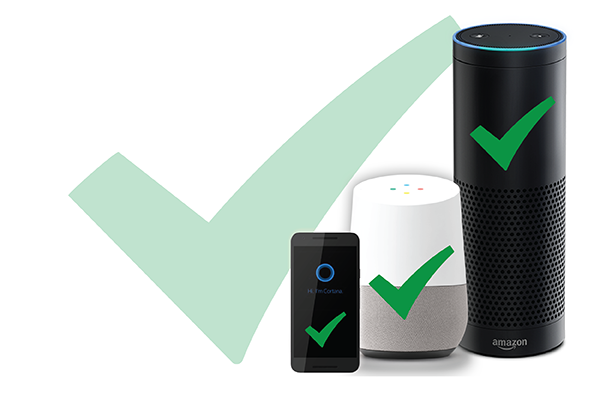10 Experts Offer Tips for Building Interactive Voice Applications
Last week, Voicebot reached out to 11 voice application development experts and asked them to highlight common mistakes that developers make in the interactive voice format. That was what NOT to do. Ten of these experts return this week with tips on what to do to improve your voice application quality. Here is the question we asked them to answer.
What is one thing people should do to build a better voice applications going forward that is applicable to all voice platforms?
 Jo Jaquinta, Independent Developer, Tza Tza Tzu
Jo Jaquinta, Independent Developer, Tza Tza Tzu
Incremental education. There are no menus, hover text, or other hints to indicate to a user what commands are available in a voice app. Most voice apps are of trivial complexity because they find the discoverability problem insurmountable. But this doesn’t have to be the case. The key is to educate the users as they use the app. Off the bat, they should just need a few commands to gain the highest value from the applications. As they use the application, they should be prompted at appropriate times with information about other relevant commands that can be used. That way, as they use the application, they discover more ways to use it. In the end, a higher degree of complexity can be supported and more value delivered.
 Stephane Nguyen, Assist
Stephane Nguyen, Assist
Do not build tree flows. Be able to understand all parameters you need at any step of the flow. When the user mentions a “value” which is asked later in the flow, then save this value, and don’t ask the question anymore.
 Nick Schwab, Independent Developer, Alexasounds.com
Nick Schwab, Independent Developer, Alexasounds.com
Build your voice applications to adapt to a user’s behavior over time. A few examples:
– Welcome a user back and shortcut them to a voice prompt instead of guiding them through the same experience every time.
– If a user uses your application to constantly do just one thing, try doing that thing automatically when they invoke your application.
– Notice when a loyal user has never used a feature of the voice application and take the opportunity to briefly tell them about it the next time they use your application.
 Jess Williams, Opearlo
Jess Williams, Opearlo
There are lots of tips and tricks you can do to build a better voice app, but one of my favorites is building in contextual awareness. There are a couple of ways you can go about doing this.
The first is to use context from previous requests. An example would be allowing a user to ask “What was my balance in March?” and then a follow on question of “How about in January?”. All platforms allow you to pass additional data between requests to facilitate this.
Another way is to build in context is to use information from external sources, such as the time of day or weather. Using a recipe skill as an example, you could vary the type of recipe suggested based on the weather outside. If it’s rainy and cold suggest something comforting and warming, whereas if it’s hot and sunny give some lighter recipe suggestions, like a summer salad.
Unsurprisingly, it’s the most well designed voice apps that have the highest retention, so it’s really worth spending as much time creating the voice interaction model for your voice app as it is developing and testing it.
 John Kelvie, Bespoken
John Kelvie, Bespoken
Leverage recorded audio in their skills, not just text-to-speech. Amazon and Google have made great strides with text-to-speech (TTS), but it still does not match well-crafted audio recordings. At a tactical level, using well-recorded and produced audio eliminates issues with listeners not understanding your app due to pronunciation issues with the TTS. But more strategically, it can provide a personality for your Skill or Action, one that will help create a stronger connection with your user. And Bespoken can help – our encoding tool automatically encodes audio to the proper standards for use with Alexa and uploads the audio to S3 for playback!
 Adam Marchick, VoiceLabs
Adam Marchick, VoiceLabs
Make sure your current session sets a consumer up for the next session. Since retention is a huge issue, give people a compelling reason to come back.
 Scott Werner, SaySpring
Scott Werner, SaySpring
This answer might be a little biased, but since building and designing voice applications is so new to a lot of us, going through a prototyping and user feedback phase before launch goes a long way to building better voice applications. Not only do you catch the issues mentioned [in last week’s article], but you figure out places where you didn’t phrase prompts in a way that gives the user guidance on how to answer.
Imagine a customer support skill that prompts a user with, “Would you like to open or edit a ticket?” It isn’t a stretch to imagine a user responding, “Yes” to that question. Going through user testing, you’ll quickly catch scenarios like that and be able to change the question to something like “You can open a ticket or edit a ticket, which one would you like to do?”
 Pat Higbie, XAPPmedia
Pat Higbie, XAPPmedia
Spend time designing, enumerating and testing the utterances for each intent so users can get what they want from the skill by speaking naturally.
 Ahmed Bouzid, Witlingo
Ahmed Bouzid, Witlingo
They need to identify the right use cases and they need to validate any assumptions that they may have. They also need to build from data points they collected on the field, build a minimally viable product, then go back and collect some more data. And, they need to involve a UX designer.
 Dan Whaley, Sabio
Dan Whaley, Sabio
Think carefully about your brand and the persona of your voice app, particularly about the style of words and phrases. If you have a traditional brand image or are in a serious market like financial services, don’t try to be too hip just because it’s a new technology. This also applies equally to chat bots in things like Facebook Messenger. For voice, also remember that Alexa, etc. are going to be speaking for you. How will your words sound in her voice? Getting this wrong will quickly put users off.
Avoid These 11 Common Mistakes When Building Voice Applications









